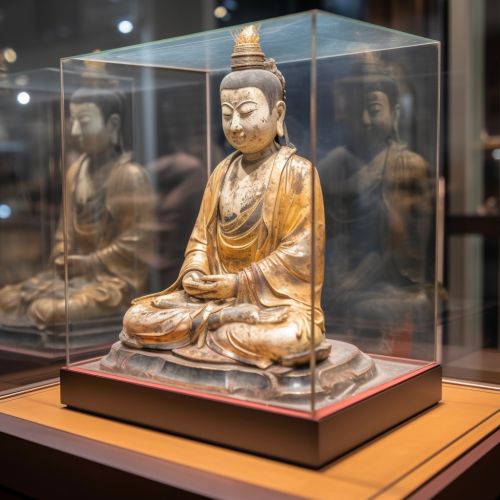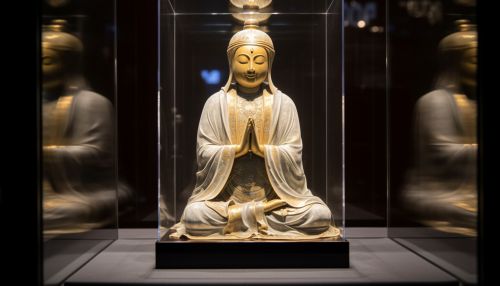Sokushinbutsu
Introduction
Sokushinbutsu is a practice of Buddhist monks, specifically those of the Shingon sect, observed in medieval Japan. This ascetic practice involves a process of self-mummification that could span years, ultimately leading to the monk's death. The monks who underwent this process aimed to reach a state of enlightenment and be revered as a Buddha after their death.
History
The practice of Sokushinbutsu is believed to have originated in the 11th century, during the Heian period of Japan. The earliest known practitioner was a monk named Kūkai, the founder of the Shingon sect. However, the practice reached its peak during the Edo period, between the 17th and 19th centuries.
Process
The process of Sokushinbutsu is divided into three phases, each lasting 1000 days. The first phase, known as mokujikigyō, involves a diet of nuts and seeds while performing physical activities to burn body fat. The second phase, known as mokujikigyō, involves a diet of bark and roots. In the final phase, the monk would lock himself in a tomb, meditate, and eventually die. After death, the body would be left for another 1000 days before it was exhumed. If the body was found to be preserved, the monk was considered to have achieved Sokushinbutsu.
Significance
Sokushinbutsu was not considered an act of suicide, which is a sin in Buddhism. Instead, it was seen as a form of further enlightenment. The monks who underwent Sokushinbutsu believed that they could enter a state of tukdam, a Tibetan Buddhist concept where an individual's consciousness remains in the body after death.
Modern Day
Today, there are 24 known Sokushinbutsu mummies in Japan. The practice is no longer observed due to its violation of laws against suicide. The mummies are revered and kept in temples, with the most famous one being that of monk Tetsumonkai at the Honmyōji Temple in Kagoshima.
See Also


